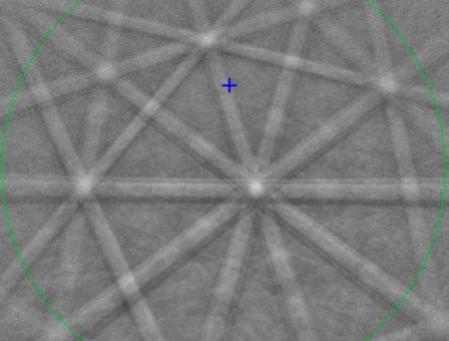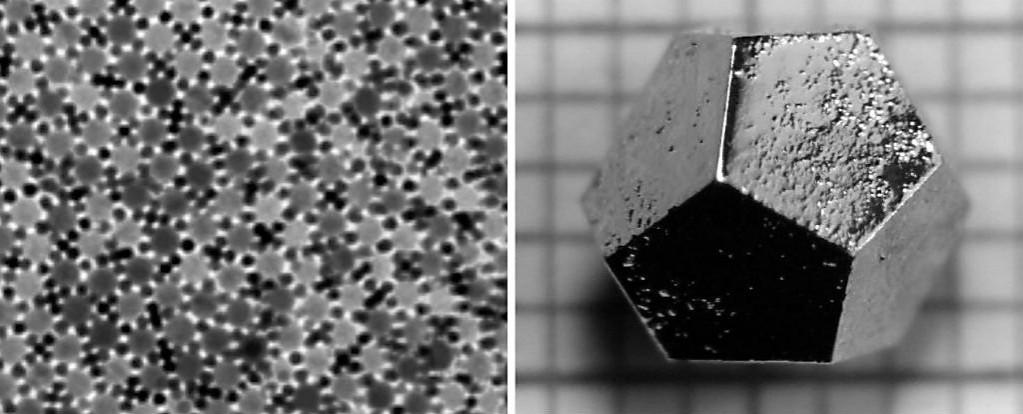A rare crystal called quasicrystal was discovered inside a Russian meteorite dubbed Khatyrka. What makes this crystal unique is its distinct atomic structure.
A quasicrystal basically refers to a unique atomic structure, which has a blend of properties of a shapeless solid and symmetrical quality of a crystal. Take a look at the real structure of the lately discovered quasicrystal:

It's the third time a natural quasicrystal has been found from the Khatyrka meteorite. This latest finding was carried out by Geologist Luca Bindi from University of Florence, Italy along with other colleagues.
The researchers stated that there can be more of these specimens out there with even more unique structures, Science Alert reported.
Paul Steinhardt from Princeton University and another researcher told Motherboard that these findings are encouraging and there are chances to find more number of quasicrystals than they have imagined.
This crystal was found five years back when researchers were observing Khatyrka. This quasicrystal was found in the same meteorite in which the previous two were discovered. It was also found that all these crystals had a distinctive atomic structure and the latest discovered quasicrystal got a new chemical composition which is being observed for the first time.
The latest quasicrystal comprises of a blend of iron, copper and aluminium atoms, the researchers found. These atoms were arranged in a pentagon-like pattern, which is similar to that on a soccer ball.

It has been found that in regular crystals or single crystals, such as snowflakes, table salt and diamonds, the atoms are found to be assembled in almost a perfect symmetry. Whereas in polycrystals such as metals, ice, rocks and even amorphous or shapeless solids like wax, glass and plastics comprise of a randomised structure which is disordered.
Despite being distinctive in nature and out of earth, the quasicrystal can be easily prepared in a lab. In fact, researchers used synthetic quasicrystal to make LEDs and frying pans.
This research has been published in Scientific Reports.








